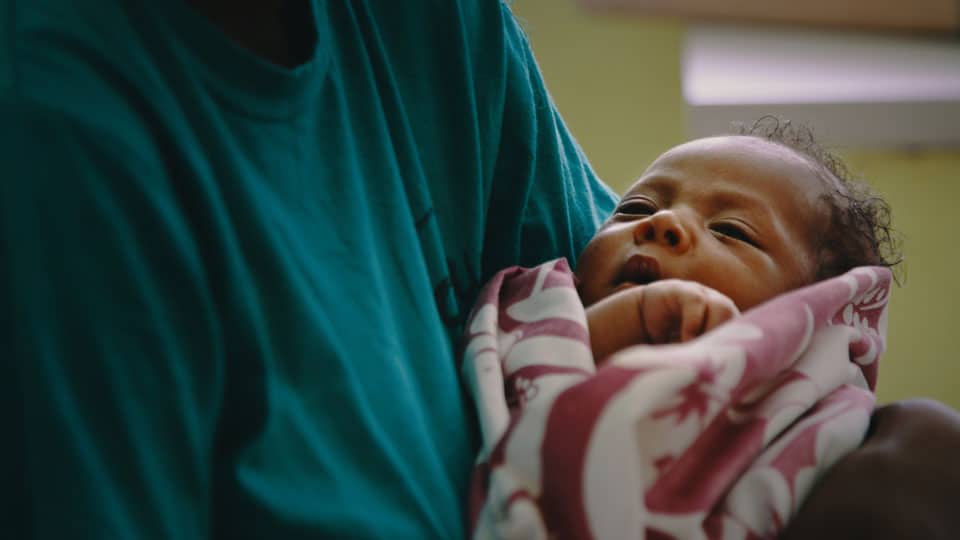The world’s most impoverished countries, predominantly in sub-Saharan Africa and parts of Asia, face substantial challenges in achieving economic growth and improving the well-being of their citizens. These nations grapple with a range of issues that hinder their progress and impede the quality of life for their inhabitants.
Extreme Poverty
One of the most pressing issues in these countries is extreme poverty. A large proportion of the population in these regions lives below the international poverty line, struggling to meet basic needs such as food, shelter, and clean water. This level of poverty is often a result of a combination of factors including limited access to resources, poor infrastructure, and a lack of economic opportunities.
Healthcare and Education
Inadequate access to healthcare and education further exacerbates the challenges faced by these countries. Limited healthcare facilities, a shortage of medical professionals, and lack of access to essential medicines lead to poor health outcomes and high mortality rates. Similarly, educational systems in these countries often suffer from a lack of resources, insufficient number of schools, and untrained teachers, which results in low literacy rates and limited skill development.
Political Instability
Political instability is another significant barrier to development in these regions. Frequent conflicts, weak governance, and corruption undermine efforts to improve economic and social conditions. This instability often leads to a vicious cycle where lack of development fuels political unrest, which in turn hampers further development.
Environmental Pressures
Environmental challenges also play a crucial role in the struggles of the world’s poorest countries. Climate change, deforestation, and natural disasters disproportionately affect these regions, further limiting their ability to grow economically and provide for their citizens. These environmental issues not only impact agriculture and food security but also lead to health problems and displacement of communities.
Economic Indicators: Gross National Income (GNI)
Gross National Income (GNI) is a critical metric for assessing the wealth of a nation. It measures the total domestic and foreign output claimed by residents of a country. However, GNI per capita, which divides the GNI by the population of the country, provides a more accurate insight into the average income of its citizens and their standard of living.
Low GNI Per Capita and Its Implications
Nations with the lowest GNI per capita are often those that face the aforementioned challenges. A low GNI per capita is indicative of limited economic activity and a small industrial base. This economic indicator correlates strongly with various social issues, including reduced life expectancies, high rates of illiteracy, and poor health outcomes. The low GNI per capita reflects the struggles of these countries in providing fundamental necessities for their populations, such as adequate healthcare, education, and a stable food supply.
Conclusion
In summary, the world’s most impoverished countries, primarily in sub-Saharan Africa and parts of Asia, are mired in a complex web of challenges. From extreme poverty and inadequate healthcare and education to political instability and environmental pressures, these nations face a steep uphill battle in improving the living conditions of their citizens. The GNI per capita serves as a telling indicator of these struggles, directly impacting life expectancy and the overall quality of life. Addressing these issues requires a multifaceted approach involving sustained international support, effective governance, and targeted development programs.
- Burundi, situated east of the Democratic Republic of the Congo, holds the title of the world’s poorest country with a GNI per capita of $780. Primarily reliant on agriculture, particularly coffee and tea production, Burundi faces challenges such as limited healthcare access, impeding its overall progress. The nation grapples with high population growth, further intensifying its difficulties.
- The Central African Republic, boasting a GNI per capita of $980, exhibits the fourth lowest life expectancy at 53.9 years, marked by persistent conflict, widespread violence, and economic instability. Struggling with severe poverty, insufficient infrastructure, and restricted access to basic services, the country possesses valuable natural resources like diamonds, gold, and timber.
- South Sudan, the world’s youngest country since gaining independence in 2011, ranks as the third poorest with a GNI per capita of $1,040 (2015 data) and a life expectancy of 55 years, the fifth lowest globally. Enduring political turmoil, internal conflict, and humanitarian crises, South Sudan faces challenges such as high poverty levels, food insecurity, and displacement. The nation’s economy heavily relies on oil production, disrupted by conflicts and political instability.
- The Democratic Republic of Congo (DRC), the largest country in sub-Saharan Africa, reports a GNI per capita of $1,110. Despite its vast natural resources, including cobalt, copper, and diamonds, the DRC grapples with prolonged conflicts, political instability, and widespread poverty. Corruption and mismanagement hinder economic development, while the country’s notable feature is the Congo Rainforest, the second-largest tropical rainforest globally.
- Somalia, positioned in the Horn of Africa, grapples with prolonged conflict, instability, and recurring droughts, creating a challenging environment for economic development. Struggling with weak governance, limited access to basic services, and widespread poverty, Somalia’s strategic location along the Gulf of Aden has been associated with piracy, though measures have reduced incidents considerably. The nation heavily relies on remittances for its economy.
- Mozambique: Despite its abundant natural resources, including natural gas reserves, Mozambique encounters significant development hurdles such as poverty, limited access to quality healthcare and education, and vulnerability to natural disasters like cyclones and floods. Located on the southeast coast of Africa, Mozambique has one of the lowest life expectancies at birth, standing at 59.3 years.
- Niger, situated in West Africa with much of its land covered by the Sahara Desert, faces numerous development challenges, including food insecurity, high fertility rates contributing to the world’s third-highest population growth, and limited access to healthcare and education systems. Over 41% of the population lived in extreme poverty in 2021, with additional challenges related to desertification and susceptibility to climate change.
- Liberia, positioned on the west coast of Africa, holds historical significance as one of the few African countries founded by freed slaves. Despite possessing significant natural resources like rubber and timber, Liberia continues to recover from a history of civil wars that severely damaged its infrastructure and institutions. Challenges persist in poverty reduction, education, and healthcare, with a prior recession linked to the Ebola epidemic before the onset of COVID-19.
- Chad, positioned in Central Africa, exhibits the lowest life expectancy at a mere 52.5 years. The country contends with challenges like political instability, frequent droughts, desertification, poverty, and regional armed conflicts. Struggling with poverty reduction, education, healthcare, infrastructure development, and high population growth, Chad, though covered in desert in its northern region, boasts significant oil reserves and serves as a crucial transit route for regional trade.
- Madagascar: Despite its abundant biodiversity and natural resources, Madagascar grapples with elevated poverty levels, deforestation, and inadequate infrastructure. Hindered by limited access to education and healthcare, the island nation off the southeastern coast of Africa relies on agriculture, particularly vanilla, for its economy.
- Malawi: Situated in Southern Africa, Malawi’s economy relies on agriculture, focusing on tobacco, tea, and sugar exports. The country faces various development challenges, including widespread poverty, food insecurity, limited access to healthcare and education, and inadequate infrastructure. Environmental issues such as deforestation and the impacts of climate change further compound these challenges.
- Eritrea, located in the Horn of Africa, features a diverse geography and a predominantly agrarian economy with a notable mining sector. Human rights challenges, including political repression, limited freedom of expression, and compulsory national service, contribute to elevated poverty and limited economic opportunities. Due to data integrity challenges, Eritrea’s GNI per capita is from 2011.
- Afghanistan, the sole non-African country on the list, primarily relies on agriculture. Decades of conflict and instability have led to high poverty levels, weak governance, and restricted access to essential services like healthcare and education. The recent Taliban takeover, following the U.S. withdrawal, resulted in currency depreciation, depleting central bank reserves, and escalating inflation.
- Sierra Leone: Positioned on the West African coast, Sierra Leone, still recovering from a civil war, encounters substantial challenges in poverty reduction, healthcare, education, and infrastructure development. Rich in mineral resources like diamonds and iron ore, the country’s economy encompasses agriculture and construction activities.
- Guinea-Bissau: Located in West Africa, Guinea-Bissau relies on agriculture, including cashew nuts and fishing, but contends with political instability, corruption, and drug trafficking, hindering its development. With a life expectancy below 60 years, the country faces elevated poverty levels, limited economic diversification, and challenges in accessing healthcare, education, and adequate infrastructure.
- Uganda: Situated in East-Central Africa, Uganda’s economy, based on agriculture with major exports like gold and coffee, grapples with challenges in poverty, healthcare, and infrastructure development. The nation also deals with issues such as high population growth, regional conflicts, refugee influxes, and environmental sustainability.
- Mali, located in West Africa, possesses the 10th lowest life expectancy globally. Dependent on agriculture and mining, particularly gold, Mali faces challenges linked to political instability, armed conflict, terrorism, and ethnic tensions. The country also confronts high poverty levels, inadequate infrastructure, and limited access to basic services.
- Gambia: Situated in West Africa, The Gambia struggles with poverty, limited access to quality education and healthcare, and susceptibility to climate change. Additionally, the country faces governance and human rights challenges, with an economy relying on agriculture, tourism, and remittances.
- Zimbabwe, located in Southern Africa, contends with governance issues, unemployment, and limited foreign investment, hindering its economic growth. Struggling with persistent poverty and stagnant healthcare progress, the country possesses abundant mineral and natural resources like platinum and diamonds, contributing to its economic potential.
- Burkina Faso, situated in West Africa, faces one of the lowest life expectancies globally, falling below 60 years. Battling poverty, political instability, security concerns, and environmental challenges like desertification, the country encounters obstacles in education, healthcare, and infrastructure development. While its economy is primarily agriculture-based, gold exports have seen an increase.
- Togo, located in West Africa with a coastline along the Gulf of Guinea, grapples with challenges related to poverty, limited access to healthcare and education, and political instability. Relying on agriculture, phosphate mining, and port services, the country works to address these hurdles.
- Rwanda, a landlocked country in east-central Africa, has made significant strides in healthcare and other areas since the 1994 genocide against the Tutsi. Although the economy is predominantly agriculture-based, tourism was a growing sector before the COVID-19 pandemic. Proactively addressing environmental and climate change issues, Rwanda emphasizes improvement in these areas.
Have you read?
The World’s Most Influential CEOs And Business Executives Of 2023.
Which are the healthiest countries in the world for 2023?
Largest Hotel Chains in the World, 2023.
Report: Antigua and Barbuda Citizenship by Investment Programme, 2023.
International Financial Centers Ranking, 2023.
Best Citizenship by Investment (CBI) for 2023.
Add CEOWORLD magazine to your Google News feed.
Follow CEOWORLD magazine headlines on: Google News, LinkedIn, Twitter, and Facebook.
Thank you for supporting our journalism. Subscribe here.
For media queries, please contact: info@ceoworld.biz





































































